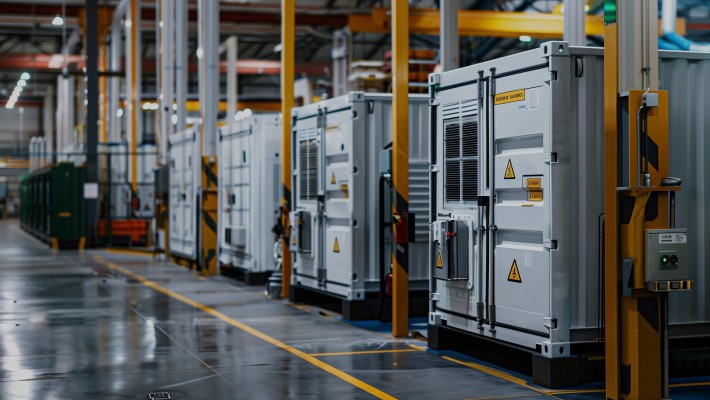Freight Forwarder Insights
Huin International Logistics Latest Articles
Industry Focus: Energy Storage
In this article, I will delve into the Department of Energy's (DOE) Loan Programs Office (LPO) initiatives in supporting energy storage projects across the United States.
To meet the Biden-Harris Administration's target of achieving a net-zero economy by 2050, U.S. energy storage capacity will need substantial scaling over the next two decades. According to DOE’s recent Long Duration Energy Storage (LDES) Liftoff Report, the U.S. grid might require between 225 and 460 gigawatts of LDES by 2050, necessitating $330 billion in capital investment within the same period. This estimate is in addition to the 160 gigawatts of utility-scale short-duration storage needed by 2050, as projected by the U.S. Energy Information Administration’s 2023 Annual Energy Outlook.
As discussed in our Tech Talk, energy storage includes various technologies that store energy generated at specific times, such as during sunny or windy periods, for later use. The LPO can finance both the manufacturing and supply chain projects related to energy storage, as well as the deployment of assorted storage technologies, including flywheel, mechanical, electrochemical, thermal, and chemical storage systems.
LPO supports these technologies through several loan programs. The Title 17 Clean Energy Financing Program’s Innovative Energy and Innovative Supply Chain category (Section 1703) offers financing for deploying innovative storage technologies or supply chain projects, which may not necessarily need to be innovative if they receive substantial support from a State Energy Financing Institution. Meanwhile, the Title 17 Energy Infrastructure Reinvestment (Section 1706) category provides financing for eligible storage technologies in projects aimed at retooling, repowering, repurposing, or replacing non-operational energy infrastructure or improving operational infrastructure to mitigate or utilize air pollutants or greenhouse gas emissions. Additionally, the Tribal Energy Financing program supports energy storage technologies in projects involving federally recognized tribes and qualified tribal energy development entities.
As of June 2023, LPO has received nearly $8 billion in financing requests for energy storage through active loan applications. For up-to-date information, refer to LPO’s Monthly Application Activity Report, which details applicant interest and the most active technology sectors engaging with the LPO.
Advanced Clean Energy Storage
In June 2022, DOE announced it had finalized a $504.4 million loan guarantee for the Advanced Clean Energy Storage project in Delta, Utah. This marks the first loan guarantee for a new clean energy technology project from LPO since 2014. This loan will aid in constructing the world’s largest clean hydrogen storage facility, designed for long-term, cost-effective, seasonal energy storage, thus enhancing grid stability. The project is anticipated to generate up to 400 construction jobs and 25 operational positions, aligning with President Biden’s climate objectives towards net-zero emissions by 2050.
The Advanced Clean Energy Storage project addresses renewable energy curtailment in the Western U.S. by providing currently unavailable long-term energy storage, supporting DOE’s Long-Duration Storage Shot initiative. The Intermountain Power Project in Utah faces excess renewable energy supply in the spring, leading to curtailment and a shortage in subsequent months. This project will convert surplus renewable energy into hydrogen for storage, seasonally balancing supply and demand to stabilize the grid further.
KORE Power
In June 2023, DOE announced a conditional commitment to provide KORE Power with a loan of up to $850 million to construct an advanced battery cell manufacturing facility in Buckeye, Arizona, named “KOREPlex.” This facility aims to boost the domestic battery supply chain, significantly increasing battery cell manufacturing capacity for energy storage systems (ESS) and electric vehicles (EVs) in the U.S. KOREPlex is projected to produce approximately 6 GWh of battery cell storage capacity annually, capable of powering more than 28,000 EVs and substituting an estimated 11.8 million gallons of gasoline yearly.
The project is expected to create around 700 construction jobs and 1,250 operational jobs. KORE will collaborate with local community colleges and Tribal communities to recruit and train the local workforce for operations roles. ESS systems store energy from intermittent renewable sources like wind and solar and dispatch it as needed. As the U.S. focuses on electrifying the transportation sector and domestic battery demand rises, the KOREPlex facility is strategically positioned to manufacture batteries to meet the country’s diverse storage requirements.
Eos Energy Enterprises
In August 2023, DOE revealed a conditional commitment to offer Eos Energy Enterprises a loan guarantee of up to $398.6 million to finance the construction of up to four advanced production lines to produce the "Eos Z3™," a next-generation utility and industrial-scale zinc-bromine battery energy storage system (BESS) in Turtle Creek, Pennsylvania.
If the project is finalized, it is expected to manufacture 8 GWh of storage capacity annually by 2026. This capacity could supply electricity to over 300,000 U.S. homes instantaneously or fulfill the yearly electricity demands of roughly 130,000 homes if fully charged and discharged daily. The project is expected to generate up to 50 union contractor construction jobs and up to 650 new operational jobs at full capacity.
Eos’s zinc-bromine Eos Z3™ batteries offer an alternative to lithium-ion, lead-acid, sodium-sulfur, and vanadium redox chemistries for stationary battery storage applications. Eos’s technology is tailored for long-duration grid-scale storage, meeting the growing energy grid demands with escalating renewable energy integration. Eos already produces a zinc-bromine battery, and if the financing is finalized, LPO will aid in developing the next-generation Eos Z3 battery system, which is anticipated to be more energy-dense and cost-effective than previous models.
